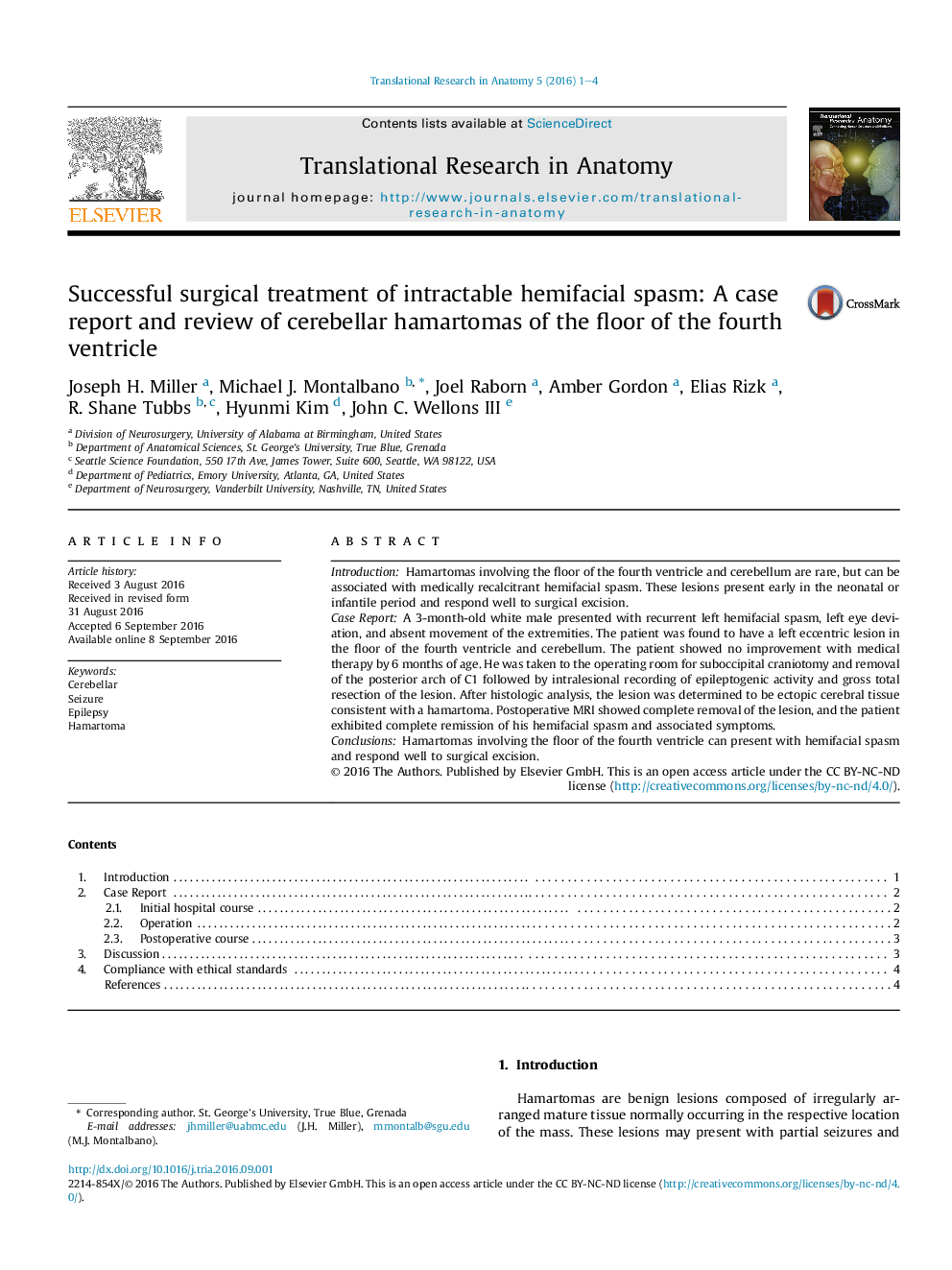| Article ID | Journal | Published Year | Pages | File Type |
|---|---|---|---|---|
| 6090662 | Translational Research in Anatomy | 2016 | 4 Pages |
â¢Six-month-old white male with 200 seizure episodes per day.â¢Radiological discovery and histological confirmation of underlying epileptogenic hamartoma.â¢Resolution of symptoms following surgical resection.
IntroductionHamartomas involving the floor of the fourth ventricle and cerebellum are rare, but can be associated with medically recalcitrant hemifacial spasm. These lesions present early in the neonatal or infantile period and respond well to surgical excision.Case ReportA 3-month-old white male presented with recurrent left hemifacial spasm, left eye deviation, and absent movement of the extremities. The patient was found to have a left eccentric lesion in the floor of the fourth ventricle and cerebellum. The patient showed no improvement with medical therapy by 6 months of age. He was taken to the operating room for suboccipital craniotomy and removal of the posterior arch of C1 followed by intralesional recording of epileptogenic activity and gross total resection of the lesion. After histologic analysis, the lesion was determined to be ectopic cerebral tissue consistent with a hamartoma. Postoperative MRI showed complete removal of the lesion, and the patient exhibited complete remission of his hemifacial spasm and associated symptoms.ConclusionsHamartomas involving the floor of the fourth ventricle can present with hemifacial spasm and respond well to surgical excision.
